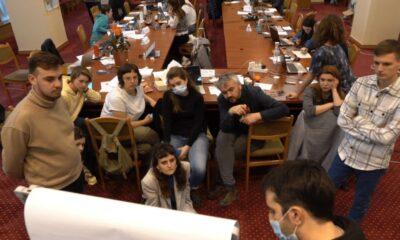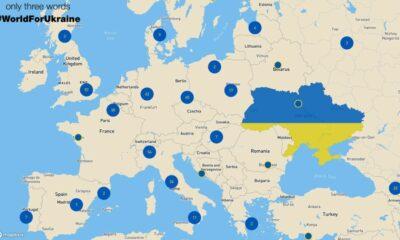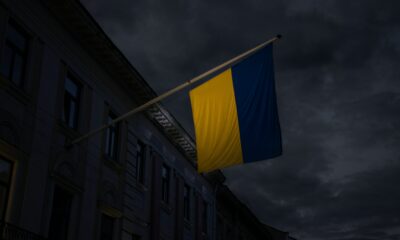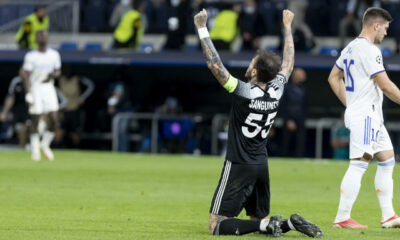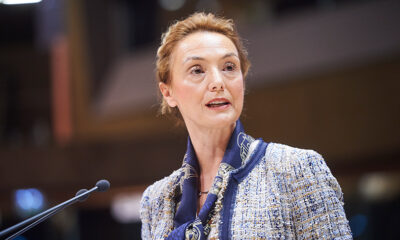Opinion
November 2012: A Predictable U.S. Election
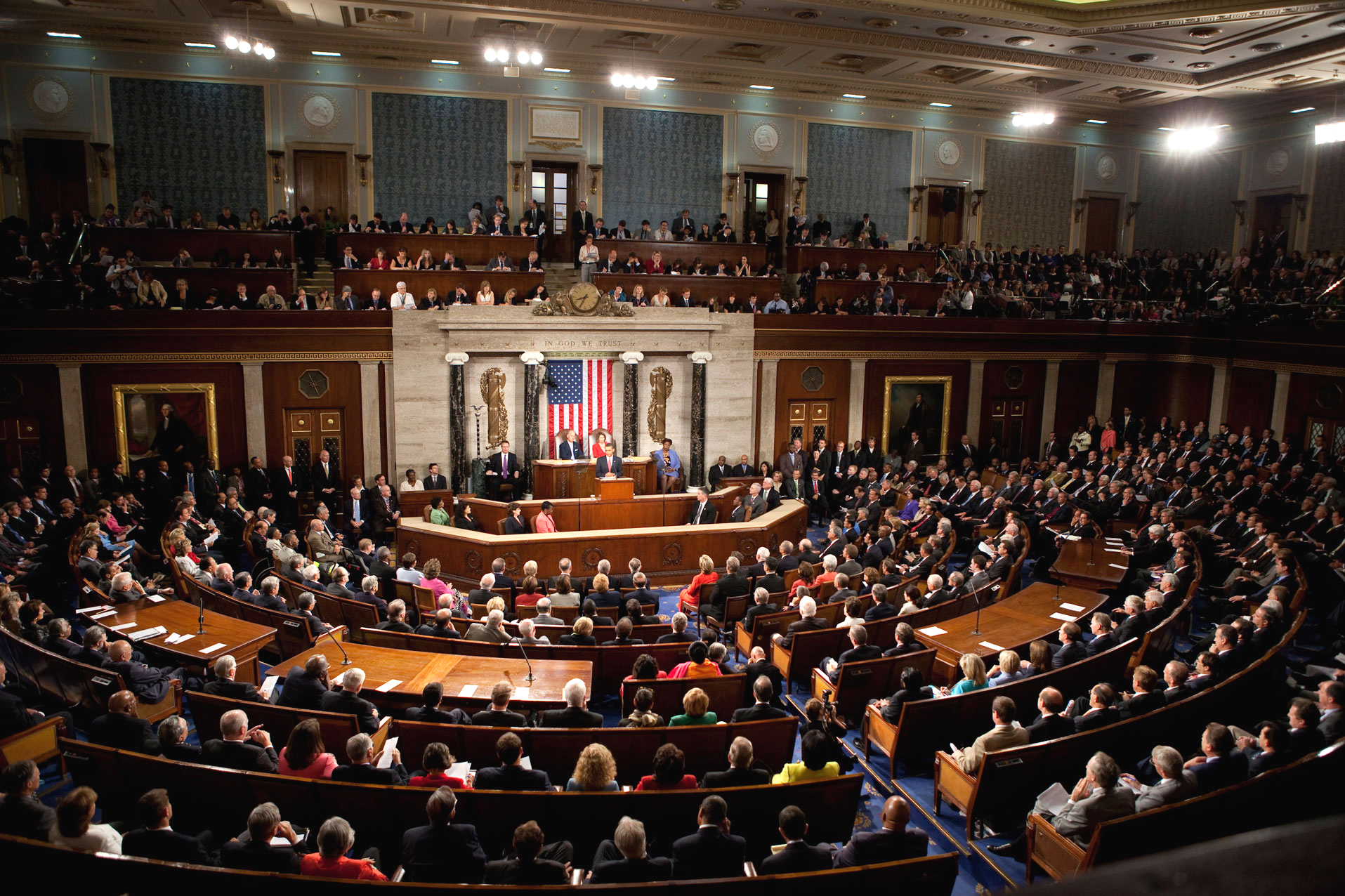
The presentation “November 2012: A Predictable Election”, which dealt with the U.S. elections of 2012, was made on February 14, 2013 to the OLLI (Osher Lifelong Learning Institute) University Cincinnati, Blue Ash audience by Dr. Ionas Aurelian Rus, at that time Assistant Professor of Political Science, currently Associate Professor of Political Science, University of Cincinnati, Blue Ash.
The opinion reflected in this piece does not necessarily represent the opinion of the editorial staff of Moldova.org.
***
This talk is a follow-up to my October 23 pre-electoral analysis on the same subject. It was fairly easy to predict that Obama would win the presidency or rather that Romney would lose the election. Obama is the seventh U.S. president who won a majority of the popular vote twice. The number of states and electoral votes that Obama won was larger than expected, as were the Democratic gains in the Senate. The fact that the increase in the number of Democrats in the House of Representatives was only minimal was not surprising for me, probably because I had briefly looked at the polls for the races in all the House districts. On the basis of the various opinion polls, district by district and state-by-state, available at the website Real Clear Politics and in other sources, I predicted that the Republicans will get at least 226 to 231 House of Representatives seats, and they got 234. The most certain pattern to predict was the increase in the number of governorships held by the Republicans from 29 to 30, through a victory in North Carolina. My analysis will focus mostly on the presidential elections.
Surprisingly, Obama largely won the elections 51.1% to 47.2%, predominantly on economic issues. Whereas the Consumer Confidence Index at the end of October 2008, right before Obama was elected the first time, was a 38, lower than ever since at least 1968, at the end of October 2012, it was a 72.2. While this was not great, it was a significant improvement. About 52% of the people thought, according to the ABC exit poll, that Obama would handle the economy better than Romney; only 44% thought the opposite.
Obama definitely benefited from the weaknesses of his Republican opponent, Mitt Romney, who was widely seen as a wealthy plutocrat who, through his past role at Bain Capital, was perceived to have led to the “export” of American jobs to other countries. Moreover, Romney had opposed the auto bailout, and his negative comments caught on tape about the poorer 47% of the population hurt him. Obama’s success among working class whites, including those with a Reagan Democrat profile, in states such as Ohio, Michigan and Wisconsin was helped by his campaign’s successful populist use of these issues. Yet Romney had already been damaged by these kinds of problems due to attacks from his Republican opponents and even from the Obama campaign during the presidential nomination season earlier in 2012. The work of the Obama campaign was facilitated by the fact that, according to the ABC News exit poll, 55% of the voters thought that the U.S. economic system favors the wealthy, and that only 39% believe that it is fair to everyone.
The Republican victories in the 2010 midterm elections, including the Republicans’ newly acquired control of the House of Representatives, forced Obama to change his policies from center-left to centrist ones. Yet this helped him in 2012 with moderates and independents. According to the Fox News exit poll, Obama won 56% of the votes of the moderates, while Romney got only 41%. A more centrist Obama also did better among conservatives, with 17%, than Romney among liberals, with 11%. Whereas independents had been during most of the campaign predominantly pro-Romney, on Election Day, they were evenly divided, 50% to 50%, according to an exit poll. By contrast, the independents had gone for the Republicans during the 2010 midterm elections by 56 to 38 percent. About half of the votes that Obama and the Democrats had gotten in 2008, but lost in 2010, went back to the Democratic fold in 2012. The candidates of both major parties also attracted a larger percentage of their party’s vote than in 2008. This reflects the greater and increasing partisan polarization during recent decades.
Obama’s victory in 2012 was more impressive than in 2008 among most racial minorities. To be sure, his support among African-Americans went down from 95% to 93% due to factors such as Obama’s switch toward support for gay marriage. Nevertheless, blacks in battleground states, such as Ohio, Virginia, North Carolina and Florida supported Obama in greater numbers compared to 2008. Moreover, Obama’s share of the Hispanic vote went up from 67% to 71%, and his share of the Asian-American vote went up from 62% to 73%. Something that might have helped were the Democratic calls for a path to legalization for illegal immigrants, but Obama’s nomination of cabinet members from the minority groups, and of a Hispanic Supreme Court justice, also helped. Yet the fact that many Hispanics thought that Romney was anti-Hispanic should not be ignored.
There were no surprises in the nationwide demographics of the vote. Romney’s massive success among Tea Party supporters, Evangelical Christians and businesspeople did not guarantee his victory. Hurricane Sandy and New Jersey governor Chris Christie’s endorsement of Obama’s handling of the disaster did not explain Obama’s nationwide victory. Yet they increased Obama’s margin, and probably explain why he also carried Florida and Virginia, which had been in Romney’s column before the storm. I did not predict this “October Surprise” on October 23. Moreover, the referendum on the legalization of marijuana in Colorado attracted to the polls more pro-legalization young voters, which also helped Obama.
Something that did not make too much difference at election time was the debates. Romney clearly won the first debate held in Denver, which focused on domestic and economic policy. Romney was more comfortable and a better debater, while Obama seemed passive and without a “taste for the jugular”. Romney briefly surpassed Obama in the polls. Obama’s and Biden’s victories in the later debates were less significant. Romney’s “47%” remark behind closed doors, which came out in September, hurt him moderately. The later evolution of the polling numbers discussed previously suggests that the statement was not decisive.
It was generally expected by the analysts who were acquainted with the polling data that the Democrats would retain control of the U.S. Senate and win more votes. They won by 54.3% to 42.2% in 33 races; 21 of them had previously been held by Democrats, and 2 by people who had caucused with them. The fact that the Democrats would win two extra seats was nevertheless not yet predictable in mid-October. Elizabeth Warren won in Massachusetts against a fairly popular incumbent, Scott Brown, partly because of her better debate performance. Brown overplayed his hand through excessive attacks against her claims that she was of partly Cherokee ancestry. Moreover, Massachusetts is a predominantly Democratic state. Angus King, a popular former independent governor of Maine, won because the national Democrats did not support the Democratic candidate, thus helping elect King, who, it was obvious, would caucus with the Democrats. The remarks about abortion in the case of rape of the Republican candidates in Missouri and Indiana helped with the election of Democrats in two Republican-leaning states that are predominantly anti-abortion and anti-moral laxity that voted for Romney for president. Those statements were widely seen not as anti-abortion, but as anti-women. The Democrats lost a Nebraska Senate seat in an open race in a predominantly Republican state.
The retention of the Republican control in the House of Representatives in 2012 is partly explained by the gerrymandering in the redistricting after the 2010 federal census. The mostly Republican state legislatures changed the geographical boundaries of House districts mostly in favor of the candidates of that party. There were a few blatant cases, such as North Carolina, which was also conspicuous for past gerrymandering. The Democrats’ victory in terms of popular votes, with 49.2%, equaled the 48% of the Republicans plus the 1.2% of the Libertarians, who are conservative on economic and budgetary issues, and liberal on foreign policy, social and moral issues. This might suggest that the country is predominantly liberal in foreign affairs, and on social and moral issues.
The number of Republicans elected to the House declined by eight, from 242 to 234. Ten out of the sixteen Republican Representatives who lost to Democrats had been elected in 2010 from swing districts that typically voted for Bush Jr. twice and later for Obama. These typically Tea Party or more mainstream candidates were too much to the right of the average voters in these districts at a time when the Democrats formed a much larger percentage of the voters than in 2010. In four districts, the Democrats won because the Libertarian candidates took away enough votes from the Republican column.
The Republican gains were mostly in the South, a common pattern in recent decades. By contrast, the Democrats’ gains were conspicuous in solid Democratic states such as New York and Illinois, and in districts with many, sometimes mostly, Hispanic, especially Mexican-American, voters. Often the retirements of House members who were ideologically at odds with the predominant ideological trend in their districts helped the most common ideology assert itself.
The results in Ohio were complex. Obama won the state’s electoral votes because of factors such as the auto bailout, the tapping of blue-collar populist sentiment, and the lower unemployment rate than the national average. Both candidates won 93-94% of the votes of the people from their party, the highest degree of loyalty in almost seven decades. Sherrod Brown won the U.S. Senate elections because of good constituency service, and also for the same reasons why Obama won Ohio, and because the Democratic line on foreign policy is supported by most Ohio voters. Yet the Republicans obtained more votes for the U.S. House of Representatives from Ohio, and for the Ohio Senate, than the Democrats. The Democrats also had almost 11,000 more votes for the Ohio House of Representatives, which remained under Republican control. This would suggest that gerrymandering had an impact. The existence of split-ticket voting should also be noted.
Predicting the future is not an easy task, but I will try it. Hillary Clinton is definitely the favorite for the Democratic nomination in 2016. She has the support of 57 to 61% of all the people planning to vote in the Democratic primaries and caucuses in the national opinion polls, and in the polls of all the states for which there is data. Bill Clinton’s extensive and highly articulate support for Obama in 2012 might not have triggered Obama’s future early endorsement of Hillary for 2016. But he would not endorse other candidates, such as vice president Joe Biden or New York governor Andrew Cuomo, who are also among the top contenders in the opinion polls, either. Yet will Hillary run?
The situation in the Republican field is less clear. However, Marco Rubio, the junior senator from Florida, is the apparent front-runner, with Paul Ryan second, Chris Christie third and Jeb Bush fourth. Chris Christie, the frontrunner for 2016 before the November 2012 elections in the opinion polls, is the only Republican candidate who has recently equaled any major Democratic candidate in a match-up for 2016. He is perhaps the only one who could win the elections of 2016 unless there will be a new recession. The Republican primary and caucus voters are clearly more conservative than the mostly, and increasingly, moderate Christie. Yet will he run? In retrospect, he might regret that he did not do so in 2012.
The opinion polling data suggests that since the elections, the Democrats are doing even better in the generic Congressional ballot. It is difficult to foresee any significant changes in the 2014 midterm elections, even though the party that does not control the White House generally wins seats in midterm elections.
The elections of 2012 were not so much won by the Democrats as lost by the Republicans. Their results were broadly predictable for those with a significant track record of electoral analysis.
Opinion
Russia And Ukraine At The Beginning of 2022
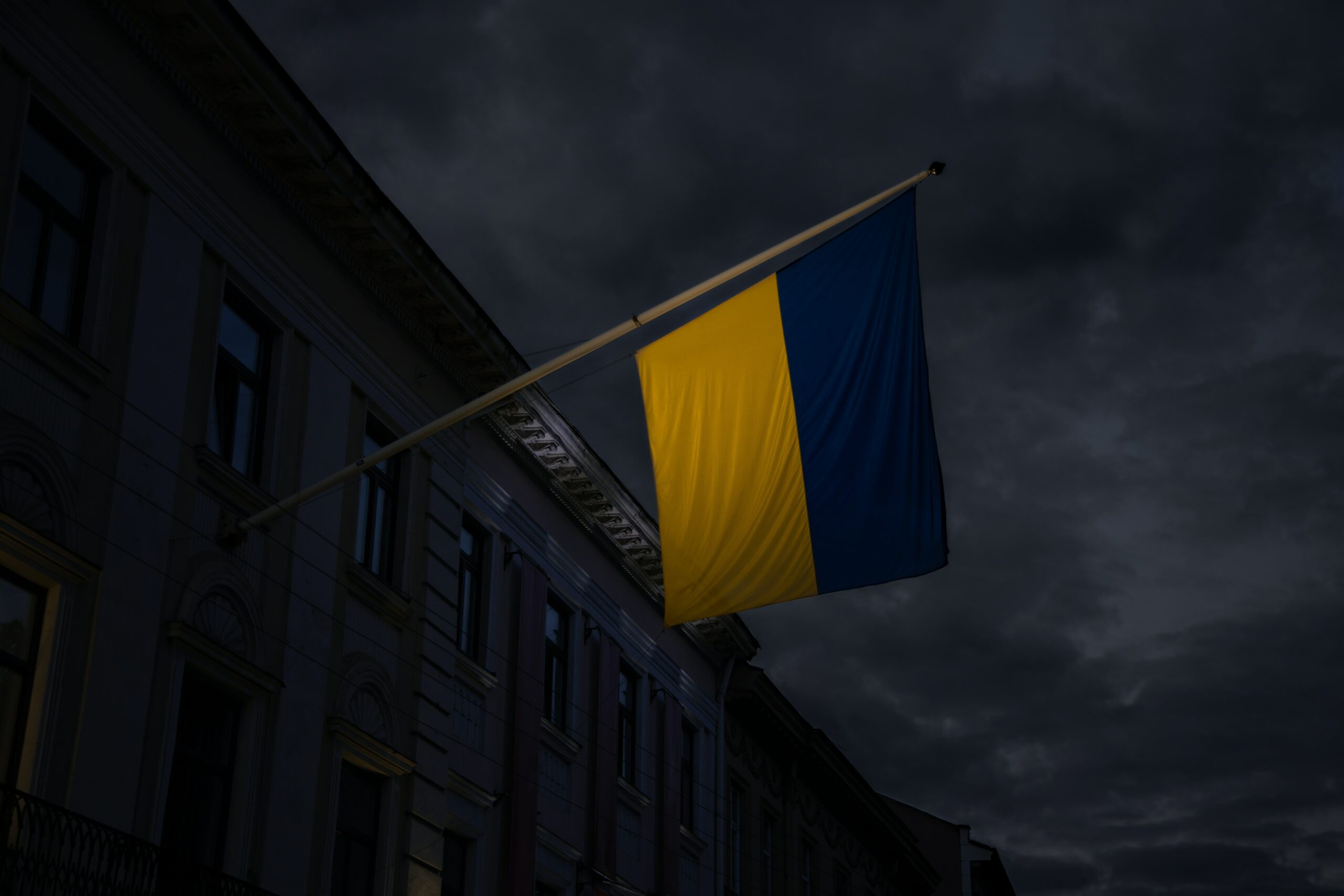
This opinion piece was written by Dr. Nicholas Dima. Dr. Dima was formerly a Professor of Geography and Geopolitics at Djibouti University, St. Mary’s University College and James Madison University. From 1975 to 1985 and from 1989 to 2001, Dr. Dima was a Writer and Field Reporter at Voice of America. The opinion does not necessarily represent the opinion of the editorial staff of Moldova.org.
***
The 21st Century Russian Federation is a rebirth of the 19-th Century Tsarist Empire; a huge territory inhabited by hundreds of ethnic groups held together by an authoritarian government. Having acquired a diversity of lands and peoples that would not freely want to be together, Moscow has to be on guard. It has to keep an eye on those who are inside the federation and to make sure that no outsiders threaten its territory. Otherwise, in a nutshell, Ukraine is Russia’s biggest dilemma and Russia is Ukraine’s biggest nightmare!
In 1991 Moscow agreed reluctantly to the dissolution of the former USSR. Ukraine became independent and consented to give up its nuclear arsenal inherited from the Soviet Union in exchange for territorial guaranties. Russia did not keep its engagement. It violated the Minsk protocol and in 2014, after a hybrid war, annexed Crimea. At the same time, pro-Russian forces took over two important eastern Ukrainian regions, Lugansk and Donetsk, where the population is ethnically mixed and somehow pro-Russian.
Since the annexation of Crimea, Moscow has strengthened its military presence in the peninsula and in the Black and Azov Seas. Furthermore, it built a strategic bridge that connects Crimea with the Russian mainland. Then, Russia began to reject NATO activities in East Europe and to denounce the presence of the US Navy in the Black Sea as provocations. In order to counter NATO, Russia also brought some of its warships from the Caspian Sea to the Black Sea through the Volga-Don Canal.
During recent years, Ukraine approached the United States and NATO and asked for assistance and, eventually, for membership in the EU and possibly NATO. For Moscow, however, Ukraine is an essential buffer zone against the West. With President Vladimir Putin lamenting the dismemberment of the USSR and embracing the traditional Russian expansionist mentality, the perspective of Ukraine’s NATO membership would be an existential threat.
The current situation at the Russo-Ukrainian border is tense and the stakes are high. Neither country is satisfied with the status quo, but the choices are very risky. The important Donbas region of East Ukraine, controlled by pro-Russian forces, is in a limbo. Ukrainian President Volodymyr Zelensky is losing support among the people and must defend his country’s integrity. Currently, Putin has the upper hand and military superiority on his side, but using brute force in the conflict could trigger further Western economic sanctions and even military hostility.
For now it seems that Moscow is mainly posturing, but the true Russian intentions are not clear. Thus, a miscalculation could trigger a catastrophe of international proportions. No one knows how the events will play out, but the danger is obvious. Moscow is playing with fire. Apparently, it does not want a full war, neither the current stalemate, nor a retreat. What does it want? It seems that Moscow knows what it wants, but not necessarily what it can!
Regionally, the situation between Europe and Russia is complex and internationally the world is confronted with threatening new realignments. With the help of Russia, Belarus has encouraged thousand of Middle East migrants to assail the Polish border and the European Union. Poland has mobilized its forces and NATO and EU are on alert. The three Baltic countries also feel threatened. And the recent Russo-Chinese economic cooperation and military rapprochement reinforce the international apprehension.
Since the dissolution of the USSR, Russia went through several uneasy stages. During the first years of transition toward a new political system Russia experienced economic decline and popular unrest. Then, Putin took over and managed to stabilize the country. Russia opted for security and stability instead of political democracy and economic prosperity. At the same time, Kremlin focused its resource on the military and strengthened Russia’s war capacity.
For the time being, Russia may want to perpetuate the current situation and to keep Ukraine under its thumb. However, things are not static and sometimes they move unpredictably. What if Ukraine does become a NATO member? Then, it will be impossible for Russia to challenge Kyiv without triggering a devastating war. On the other hand, waiting is not in Russia’s advantage. Demographically, ethnic Russians are declining and the non-Russians, mostly Muslims, are fast increasing. The continuous emigration to the West of many Russians is not helping the population balance either. This trend will almost certainly renew old conflicts especially in the unsettled Caucasus region…
Attacking Ukraine now, overtly or through a hybrid war, would be risky for Russia and would not bring a lasting solution to the dispute. The war could destabilize Kyiv and even dismember Ukraine, but it would also destabilize the Russian Federation. The present tension will probably be diffused, but the next time around, in about 10 to 20 years, Putin will be gone, Moscow itself will be in disarray, Caucasian Muslims will be asking openly for independence and Ukraine will be ready and capable to fight Russia.
A Russo-Ukrainian war, now or later, will immediately have regional effects engaging Belarus and most likely Poland, the Baltic States, Moldova, Romania and implicitly NATO. Romania, for example, will follow its western allies, but it could not ignore the fact that certain formerly Romanian lands are now part of Ukraine. As for Moldova, beyond the facts that Moldovans are Romanians, its Transnistrian (Transdnestr) area is entirely under Russian control and in an eventual war will be used by Moscow against Ukraine.
Nicholas Dima, January 1, 2022
Featured
FC Sheriff Tiraspol victory: can national pride go hand in hand with political separatism?
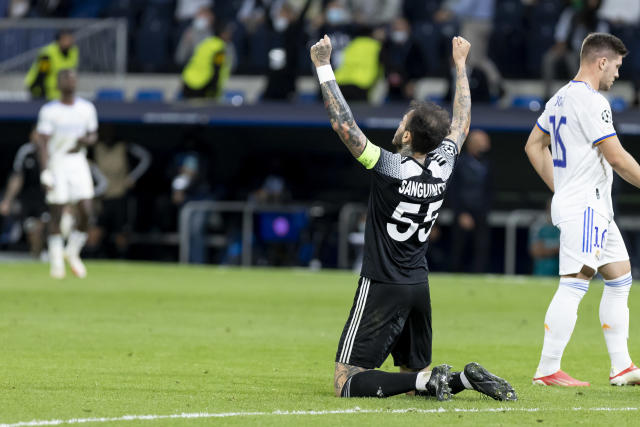
A new football club has earned a leading place in the UEFA Champions League groups and starred in the headlines of worldwide football news yesterday. The Football Club Sheriff Tiraspol claimed a win with the score 2-1 against Real Madrid on the Santiago Bernabeu Stadium in Madrid. That made Sheriff Tiraspol the leader in Group D of the Champions League, including the football club in the groups of the most important European interclub competition for the first time ever.
International media outlets called it a miracle, a shock and a historic event, while strongly emphasizing the origin of the team and the existing political conflict between the two banks of the Dniester. “Football club from a pro-Russian separatist enclave in Moldova pulls off one of the greatest upsets in Champions League history,” claimed the news portals. “Sheriff crushed Real!” they said.
Moldovans made a big fuss out of it on social media, splitting into two groups: those who praised the team and the Republic of Moldova for making history and those who declared that the football club and their merits belong to Transnistria – a problematic breakaway region that claims to be a separate country.
Both groups are right and not right at the same time, as there is a bunch of ethical, political, social and practical matters that need to be considered.
Is it Moldova?
First of all, every Moldovan either from the right or left bank of Dniester (Transnistria) is free to identify himself with this achievement or not to do so, said Vitalie Spranceana, a sociologist, blogger, journalist and urban activist. According to him, boycotting the football club for being a separatist team is wrong.
At the same time, “it’s an illusion to think that territory matters when it comes to football clubs,” Spranceana claimed. “Big teams, the ones included in the Champions League, have long lost their connection both with the countries in which they operate, and with the cities in which they appeared and to which they linked their history. […] In the age of globalized commercial football, teams, including the so-called local ones, are nothing more than global traveling commercial circuses, incidentally linked to cities, but more closely linked to all sorts of dirty, semi-dirty and cleaner cash flows.”
What is more important in this case is the consistency, not so much of citizens, as of politicians from the government who have “no right to celebrate the success of separatism,” as they represent “the national interests, not the personal or collective pleasures of certain segments of the population,” believes the political expert Dionis Cenusa. The victory of FC Sheriff encourages Transnistrian separatism, which receives validation now, he also stated.
“I don’t know how it happens that the “proud Moldovans who chose democracy”, in their enthusiasm for Sheriff Tiraspol’s victory over Real Madrid, forget the need for total and unconditional withdrawal of Russian troops from Transnistria!” declared the journalist Vitalie Ciobanu.
Nowadays, FC Sheriff Tiraspol has no other choice than to represent Moldova internationally. For many years, the team used the Moldovan Football Federation in order to be able to participate in championships, including international ones. That is because the region remains unrecognised by the international community. However, the club’s victory is presented as that of Transnistria within the region, without any reference to the Republic of Moldova, its separatist character being applied in this case especially.
Is it a victory?
In fact, FC Sheriff Tiraspol joining the Champions League is a huge image breakthrough for the Transnistrian region, as the journalist Madalin Necsutu claimed. It is the success of the Tiraspol Club oligarchic patrons. From the practical point of view, FC Sheriff Tiraspol is a sports entity that serves its own interests and the interests of its owners, being dependent on the money invested by Tiraspol (but not only) oligarchs.
Here comes the real dilemma: the Transnistrian team, which is generously funded by money received from corruption schemes and money laundering, is waging an unequal fight with the rest of the Moldovan football clubs, the journalist also declared. The Tiraspol team is about to raise 15.6 million euro for reaching the Champions League groups and the amounts increase depending on their future performance. According to Necsutu, these money will go directly on the account of the club, not to the Moldovan Football Federation, creating an even bigger gab between FC Sheriff and other football clubs from Moldova who have much more modest financial possibilities.
“I do not see anything useful for Moldovan football, not a single Moldovan player is part of FC Sheriff Tiraspol. I do not see anything beneficial for the Moldovan Football Federation or any national team.”
Is it only about football?
FC Sheriff Tiraspol, with a total estimated value of 12.8 million euros, is controlled by Victor Gusan and Ilya Kazmala, being part of Sheriff Holding – a company that controls the trade of wholesale, retail food, fuels and medicine by having monopolies on these markets in Transnistria. The holding carries out car trading activities, but also operates in the field of construction and real estate. Gusan’s people also hold all of the main leadership offices in the breakaway region, from Parliament to the Prime Minister’s seat or the Presidency.
The football club is supported by a holding alleged of smuggling, corruption, money laundering and organised crime. Moldovan media outlets published investigations about the signals regarding the Sheriff’s holding involvement in the vote mobilization and remuneration of citizens on the left bank of the Dniester who participated in the snap parliamentary elections this summer and who were eager to vote for the pro-Russian socialist-communist bloc.
Considering the above, there is a great probability that the Republic of Moldova will still be represented by a football club that is not identified as being Moldovan, being funded from obscure money, growing in power and promoting the Transnistrian conflict in the future as well.
Photo: unknown
Miscellaneous
Study// What is the reaction of authorities to journalistic investigations?

“People expect logical consequences when they see cases of undeclared assets, conflicts of interest, protectionism or proof of certain acts of corruption in the press. Appropriate reaction of authorities is expected even more when the country has commitments in the field of promoting integrity and fighting corruption. The Republic of Moldova has made such commitments. Still, real and effective actions to ensure the proper functioning of most public institutions as a result of eliminating corrupt elements are not very visible,” it is mentioned in the study “Reaction of authorities to journalistic investigations into cases of integrity issues and corruption” launched during an online event organized by the Association of Independent Press and Transparency International Moldova on May 5.
The current study is the third published study after those conducted in 2017 and 2019. All of them aimed to observe the way authorities take into account, verify and sanction the facts described in various journalistic investigations. Another purpose was to monitor persons mentioned in the investigations, in order to see if integrity issues reported by journalists were taken into account when they were promoted or moved to another position.
The 2021 study includes 19 monitored investigations, published between August 2019 and December 2020 by media institutions specialized in conducting investigations in the field of integrity, corruption and organised crime (RISE Moldova, Investigative Journalism Center of Moldova, Ziarul de Garda, MoldovaCurata.md), as well as contains a retrospective of the authorities’ reactions as a consequence of 10 investigations published in the last 5 years.
Study insights
First of all, the investigations monitored in the study were followed by a reaction from either National Integrity Authority (NIA) – as most of the facts described in the monitored investigations concerned assets and conflicts of interest, which fall within the NIA scope of
competence – or other state institutions. The study showed that state authorities were lastly more keen to react to investigations and initiate controls, as compared to 2017 and 2019. In 2017, when 32 investigations were monitored, the percentage of cases with lack of reaction from state institutions was 26%. In 2019, out of the 26 monitored investigations the percentage of non-response cases was 42.3%. In the present study, which includes 19 monitored investigations, the percentage of cases with no reaction was 0%.
The results of introduced controls have been not fruitful yet. Of the 19 controls, 10 are still ongoing, 2 – rejected, 3 confirmed the facts stated in the investigations and 1 resulted in an ongoing criminal case.
Only 3 persons targeted in the monitored investigations became subjects of criminal cases. One person out of 3 was prosecuted directly for the facts described in the investigation, following a complaint filed by a third party. Moreover, “the results continue to indicate a certain degree of tolerance of institutions whose employees are targeted in journalistic investigations as having integrity issues,” is mentioned in the study. As compared to previous studies, no cases of promotion of persons with integrity problems were recorded (8 cases in 2017 and 2 cases in 2019). Still, out of 19 documented investigations, there was only one resignation for the reasons described in the investigation. That happened only after state institutions put pressure on the concerned institution. Also, there were 2 cases when the mentioned people resigned for other reasons than the accusations stated in the investigations.
When looking at the reaction of authorities in the case of 10 investigations published in the last 5 years, it can be observed that the facts described in the investigations had a greater impact on public opinion, but didn’t generate adequate and timely responses from the responsible institutions. Authorities reacted depending on the conjuncture and political reality, sometimes long after the publication of investigation. “With regard to investigations involving mismanagement of public money or alienation of public assets, it is extremely rare for those responsible to be brought to justice and for the material damage caused to be recovered.” Criminal cases were filed only after the change of government (politicians) or when officials become hostile to people in power (judges, prosecutors), as one of the study authors, Victor Mosneag, noticed.
“There is a perception that journalists conduct good investigations and nothing happens after that,” Viorica Zaharia, the second author, said. According to the author, the lack of authorities’ reaction discredit the institutions in charge of control and penalty, as well as media institutions that publish investigations. “We hope that through these studies, more pressure will be put on the authorities to pay more attention to journalistic investigations into conflict of interests, public procurement, assets that exceed the declared income, and so on,” mentioned Viorica Zaharia at the presentation event.
The study can be read here.
Photo: Volodymyr Hryshchenko| Unsplash


